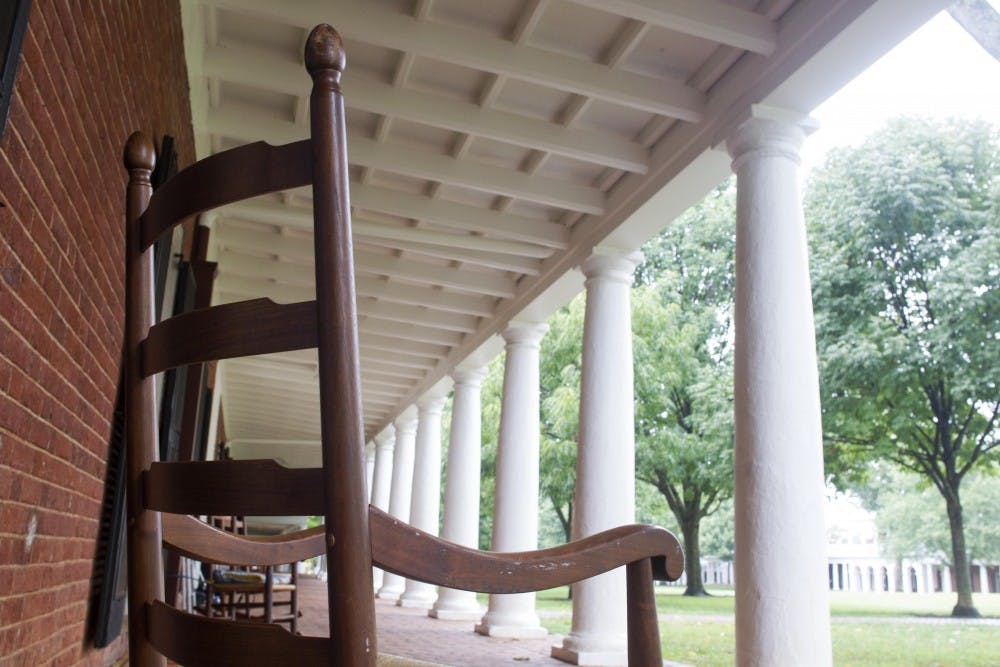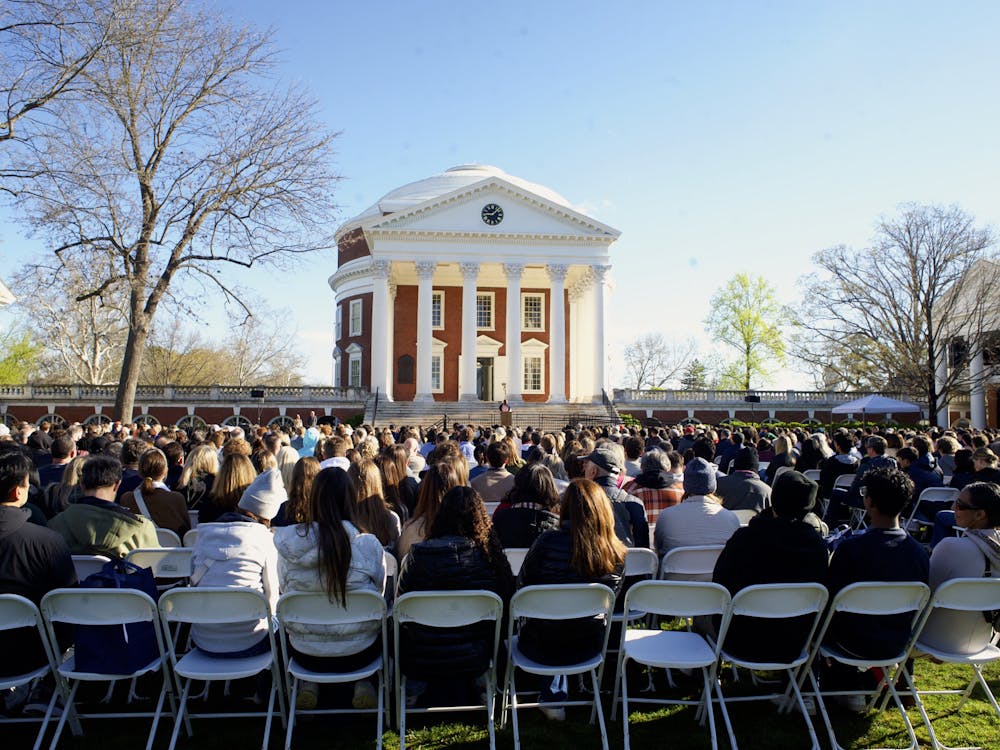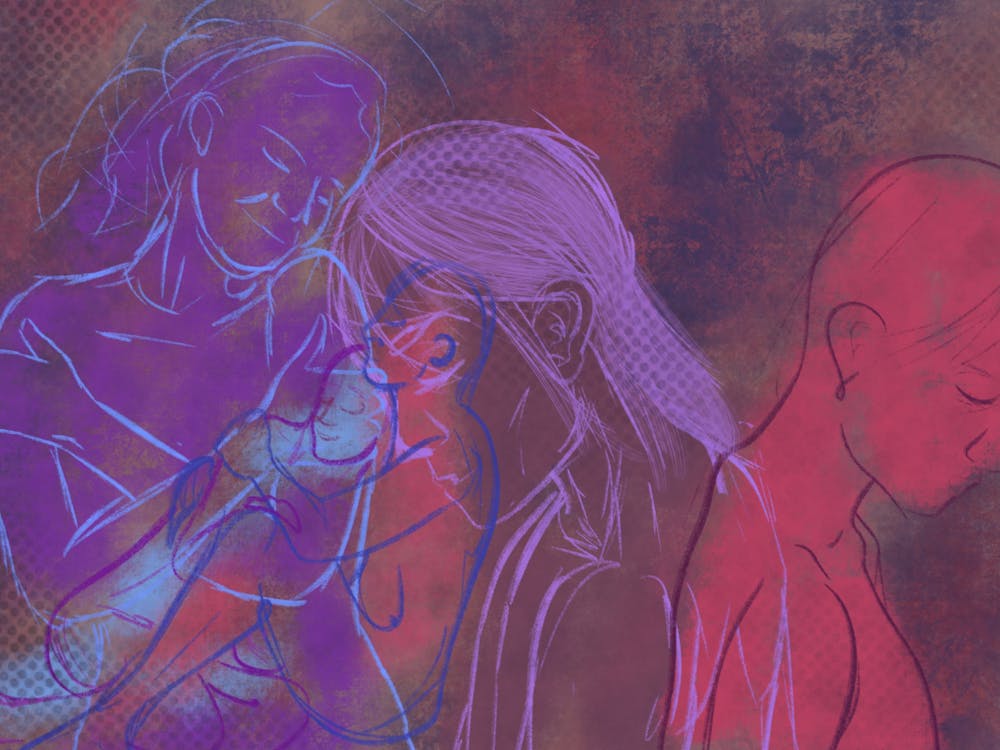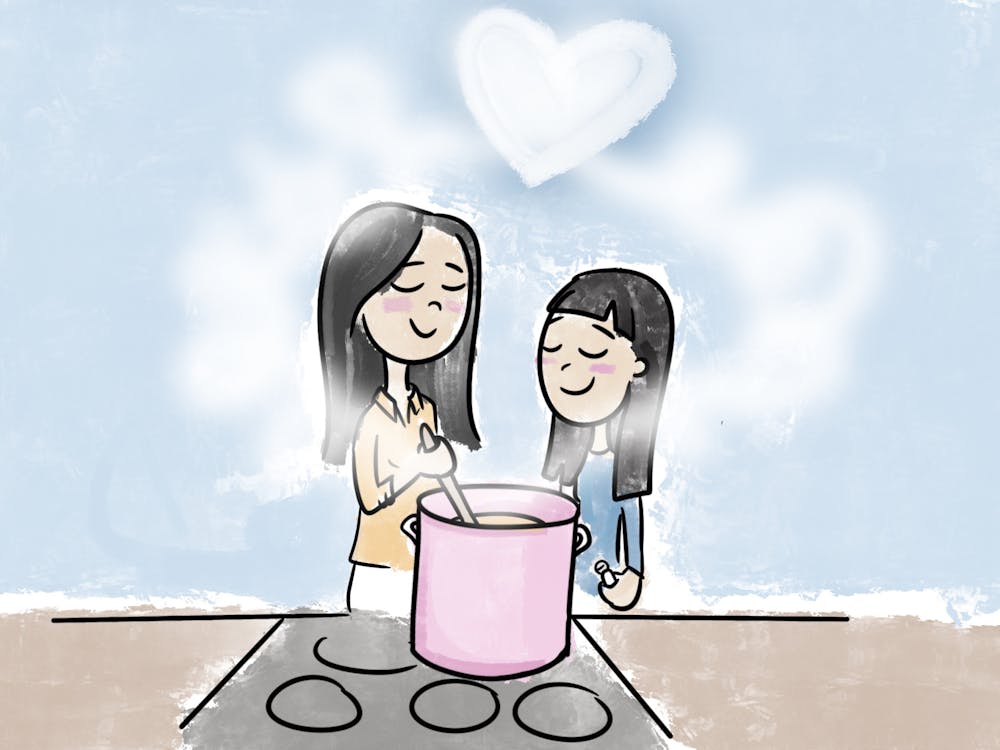“It was around 8:30 [p.m.] that I got word that the alt-right would be coming to do something on the Lawn,” fourth-year Batten student and Lawn resident Diane D’Costa said. “There were only a few of us who moved in that day, and even fewer who were spending the night on the Lawn.”
Aug. 11 was the first day the Lawn was open for its new residents, or “Lawnies,” to move in. This was also the date white nationalists marched through Central Grounds. D’Costa, a Jewish woman of color, recounted her experience and emotions as she watched the hateful group march by the door of her new room.
“I heard a roar of chants that said, ‘You will not replace us,’ which then turned into, ‘Jews will not replace us,’” D’Costa said. “I looked out of my peephole and just saw flames migrating across the little view that I had. My body was physically responding to the terror. My ears were ringing, my heart felt like it was in my throat, my chest got so tight it felt like I wasn’t breathing.”
As D’Costa left her Lawn room to find refuge in the neighboring pavilion and later a friend’s apartment off-Grounds, she hid her Israeli flags and took off her Hamsa necklace and Shema ring, concealing the visible indicators of her Jewish heritage. Looking back, D’Costa was mad at herself for detaching from a part of her identity, but was also genuinely terrified for her personal safety.
“As a Jewish woman of color living on the Lawn, I couldn’t help but feel like those words were targeted towards me,” D’Costa said. “They hate every part of my identity. I am exactly what they hate.”
As she watched the torches march by, D’Costa realized the individuals consciously made the decision to take time out of their day to gather and display their hate on the Lawn, a place she calls home — a home she was forced to leave.
She returned to her Lawn room on the morning of Aug. 12 only to leave again later that day when the Charlottesville Mayor declared a state of emergency.
“I was scared to go into what felt like a foreign city,” D’Costa said. “I packed a small bag, grabbed my keys, locked my door, ran to my car to drive home to Maryland. I felt like I was still running and fleeing like the stories of my great-grandparents who fled Poland in 1939. It was unreal.”
Fourth-year College student and Lawn resident Alex Rigby also moved into his Lawn room Aug. 11 and was astonished to learn the Lawn is designated as a public space rather than a residential area, making the University incapable of stopping the march.
“I was gobsmacked that the University couldn't stop Nazis marching through,” Rigby said. “There are children who live on the Lawn, and I couldn't believe the University allowed that to happen because it was a clear and present danger to the people living here.”
Disappointed with the way the University responded to the event, Rigby said no one from the administration or working group has since reached out to him as a Lawn resident, though his living space was actively violated. He said he has not personally been given a genuine opportunity to sit down and talk about the event — something he thinks would have been helpful. He challenged the University’s public response, specifically to The White House.
“This University was attacked,” Rigby said. “This town was attacked, and this University should have stood up to The White House and caused a scene. But they didn't.”
Additionally, the University has not commemorated who Rigby calls some of the greatest heroes this University has ever seen — the students who surrounded and protected the Jefferson statue the night of Aug. 11.
“The University should have honored them for what they did,” Rigby said. “There was no big ceremony for them. Nothing.”
The Cavalier Daily scheduled to meet with the University’s Vice President and Chief Officer for Diversity and Equity, Dr. Marcus L. Martin to give the University an opportunity to respond, but Dr. Martin canceled the meeting and was unable to reschedule.
Neither Rigby nor D’Costa spent the night in their Lawn room after the events of Aug. 11 and 12. However, fourth-year Lawn resident and College student Casey Schmidt did. Like many other Lawnies, Schmidt had been counting down the days until he could finally move into his Lawn room.
“I came down that night,” Schmidt said. “I was literally coming for the first time into my Lawn room. Had a suitcase. Ready to move in. And as I’m coming in for the first time, the torches are at the back, starting to come up on the Lawn.”
He described the scene similar to Rigby’s recollection in that the Lawn was eerily peaceful. Despite the shouting, he said there were no conflicts and the crowd seemed to stay in a single-file column, avoiding groups of students, who were standing off to the side.
Nonetheless, Rigby said the hate group was inherently violent and dangerous and was clearly armed with torches.
“These people are not good,” Rigby said. “There is nothing good about white supremacists. They are naturally violent, hateful people. How could you allow them to march through a space where children are living? With flames. [Aren’t] flames a threat [themselves]?”
These events seemed to have left a tainted feeling on the Lawn, hurting that first milestone of a Lawnie’s last year as an undergraduate. D’Costa couldn’t be near the Lawn to witness the “March to Reclaim our Grounds” vigil because of its resemblance to the alt-right march and the fear it caused.
Reflecting on the experience, D’Costa said what this group did was very uncharacteristic of the Lawn and what it is meant to symbolize, making the event that much more frightening. One of her favorite places, a place that brings her and her peers so much joy, was the setting of one of the most terrifying experiences of her life.
Schmidt fears a return of these hateful groups and points to a recent encounter with a University alum and former Lawn resident as evidence that hate still exists on Grounds and in the Charlottesville community. During the tailgating festivities of a home football game, a woman approached Schmidt asking about an anti-hate sign hanging on his door.
“I was pretty off-guard when she started asking questions [about the poster] that were pointed in a more negative light,” Schmidt said. “She said something about ‘I’m disappointed to see no diversity of thought. The University is dead. We have descended into group-think.’”
Schmidt pushed back against her comments, stating his disagreement as she walked away.
Frustrated with the lack of genuine response to the events in Charlottesville and troubling circumstances across the country, Rigby believes the responsibility to face these problems begins with members of society.
“We live in a climate in where there don’t seem to be solutions to the problems because the people in charge don’t want to face them,” Rigby said. “So, the best thing we can do is help each other create a warm and dynamic environment.”
Rigby said the event encouraged a stronger sense of community and a reamplification of the notion of the Lawn as a place of history and the site of many notable events, referencing the space as a former Confederate hospital and as a location where Martin Luther King, Jr. once spoke. The Lawn is a place of complex history, just like the University, and will continue to be a place of resilience.





